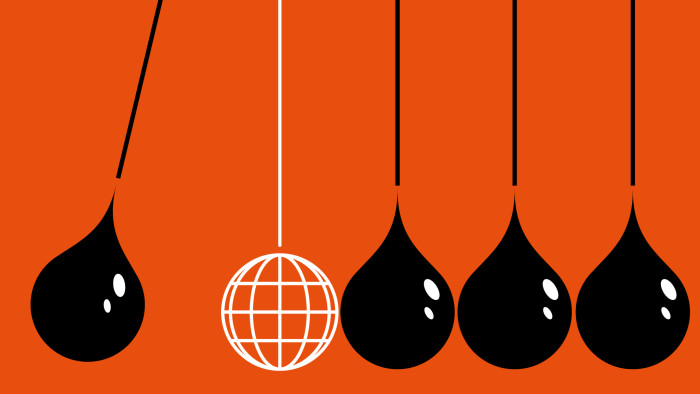Finance replaces Opec as oil supply arbiter
Roula Khalaf, Editor of the FT, selects her favourite stories in this weekly newsletter.
North American capital markets are replacing Opec as the “central banker” of oil, bearing the responsibility for balancing oil markets. With Opec no longer setting the marginal supply, capital markets are providing or withdrawing liquidity, and shaping oil supply in the process.
Following the Opec meeting last November, market observers searching for a production response to lower prices were focused on marginal output in places such as Russia, Colombia, Mexico, the North Sea and the US. But production has not capitulated as many expected.
With support from depreciating currencies and accommodative tax adjustments, production in key countries once thought vulnerable has held up. In spite of sanctions imposed by the west on Moscow and Russian companies, the depreciation of the rouble has resulted in a boost to production, as just about all operating and development costs are denominated in local currency.
In spite of warnings that Russian production would fall more than 500,000 barrels per day (b/d) in 2015 and 1m b/d by 2017, it has risen by 200,000 b/d so far this year and is expected to continue to rise for the next three to five years. In Colombia, where production was expected to decline by as much as 250,000 b/d by year-end, lower taxes are also giving a boost to production. Other than in Mexico, non-Opec output elsewhere has not rolled over either, at least not yet.
This leaves US shale as the main focus in the search for production declines. And here, where currency and tax relief are scarce, scepticism about the viability of production has been abundant, focusing on perceived high costs and high well-level decline rates. But year-to-date production remains robust. And as technology and process improvements show few signs of slowing, there is a general consensus that a significant part of the US shale play is economic not just at prices below $65 per barrel, but even below $45 a barrel.
Falling costs, too, have bolstered shale’s position. But even though underlying economics are improving, financial positions of producers are rapidly deteriorating, as low prices cascade through balance sheets.

Shale is uniquely sensitive to financial stress because it is uniquely dependent on capital markets. Every year since 2010, the US upstream sector has outspent the cash flows it generates, creating a “funding gap” that has to be filled in order for the sector to increase production.
Until now, shale’s funding gap has been easy to plug because the sector has been a darling of risk capital providers in an era of quantitative easing. In a world of $100 oil and interest rates at or near zero, it is no surprise that capital chased what looked attractive returns, taking on greater risk than perhaps many realised, but generating a 90 per cent expansion in US production since the start of this decade.
FT series:

How the energy landscape could be reconfigured by the dramatic fall in crude prices
Undoubtedly if costs of capital were higher and risks better accounted for by markets, US production growth would have been far less than the 1m b/d that actually took place for three years running. Capital indiscipline combined with the exploitation of productive rocks have been the prime movers of US production growth.
Now the time of reckoning has come. Just as capital markets enabled the expansion of shale, they will shape its rationing. Weaker producers look exposed to distress. The cost of capital is rising — and for riskier borrowers it is rising sharply. Capital availability is contracting: high yield markets are closed, loan markets are drying up and important reserved-based lending facilities are due for cuts in the autumn. It is conceivable that US production will fall by as much as 500,000 b/d by this winter, half from shale and the rest from US conventional output.
Some groups will not avoid a painful cleansing, but there is good news for the longer term. Many of the sector’s underlying assets are fundamentally competitive in the global oil markets and are becoming more so every year as technology and innovation race ahead. After a shakeout, consolidation of the best assets by the strongest producers should generate a healthier, more sustainable industry.
The question for shale’s “phase two” then becomes: will capital discipline prevail, or will markets repeat their mistakes and cement shale’s role as a perpetually destabilising force?
Ed Morse is global head of commodities research at Citi
Comments